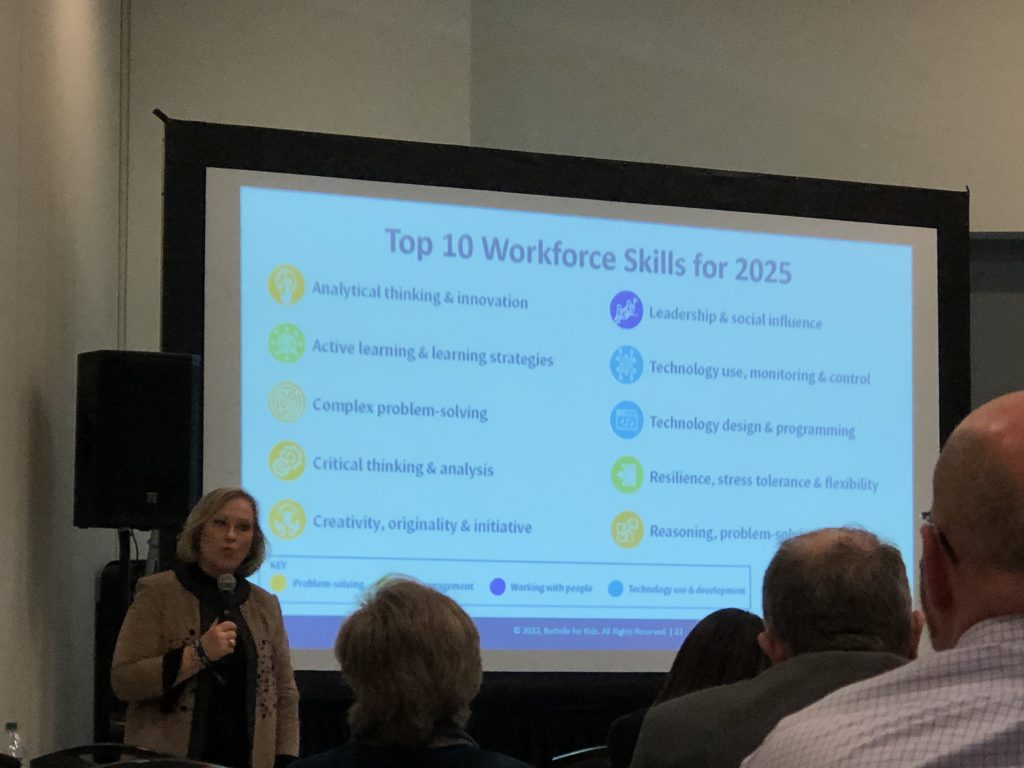Several superintendents who have created “Portraits of a Graduate” in their school districts sat on a panel for an AASA pre-conference workshop, “Your Roadmap to 21st Century Learning Starts Here,” in Nashville on Wednesday.
As the workforce and the world around students evolves, districts must be preparing learners for the world that awaits them after graduation.
“You have your community’s future workforce sitting in your system right now,” said Michael McCormick, superintendent of Val Verde Unified School District in Perris, Calif.
McCormick admitted he is worried for the future of public education. While companies like Netflix and Amazon have embraced transformation (think DVD mail-ins versus today’s streaming), education, he said, is “so locked into systems and structures that Horace Mann was talking about in the late 1800s. It hasn’t changed a lot.”
Battelle for Kids, a not-for-profit organization, collaborates with the school systems to create a portrait of a graduate — an aspirational composition of what students should be able to achieve by the time they graduate.
Karen Garza, president and CEO of Battelle for Kids, said the portraits serve as a “north star for transformation.” Once one is created, it helps inform a district’s decisions, policies and approach.
Though content knowledge is important, said Garza, it is not sufficient. Top workforce skills now include analytical thinking, problem solving and resilience. “How intentional are we at teaching these things? Are we as intentional as [we are with] curriculum? Well, we should be,” she added.
Districts need to prepare students for jobs that may not even exist yet. As Battelle for Kids Vice President Valerie Greenhill said, new jobs are popping up each year that did not exist when high school students were in elementary school. By 2025, according to the Learning Policy Institute, 50 percent of employees will need to retool their skills.
Kelly Lyman, superintendent of Mansfield Public Schools in Gurleyville, Conn., said her district’s portrait of a graduate is the focus of their work. After adopting the portrait, they recognized the need for practices to change.
The portrait helped create a symbiotic relationship between the voice of students, the goals of the school board and the implementation with faculty, said Lyman.
Being intentional about who is designing the portrait is important, panel members emphasized. Incorporating student and community voice yields very different results than board- and leader-only designs.
Michael Barnes, superintendent of Mayfield Public Schools in Cleveland, Ohio, added the new practice of asking parents what they want and what they value can be transformative.
“Many people think there’s an entry point for deeper learning, but that’s not true,” said Garza, a former superintendent, who discussed the higher cognitive skills employers value these days. She said marginalized students get great value out of these goals.
She encouraged school leaders to ask themselves this question: Can you say every student in your district is getting a 21st-century education?
(Jacqueline Hyman is managing editor for Conference Daily Online and senior editorial assistant for AASA’s School Administrator magazine.)


